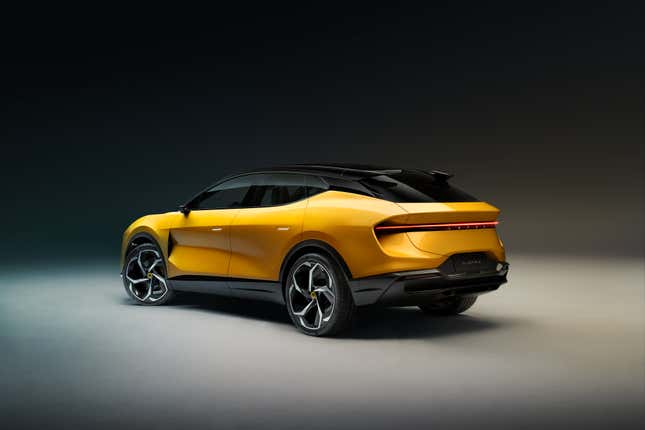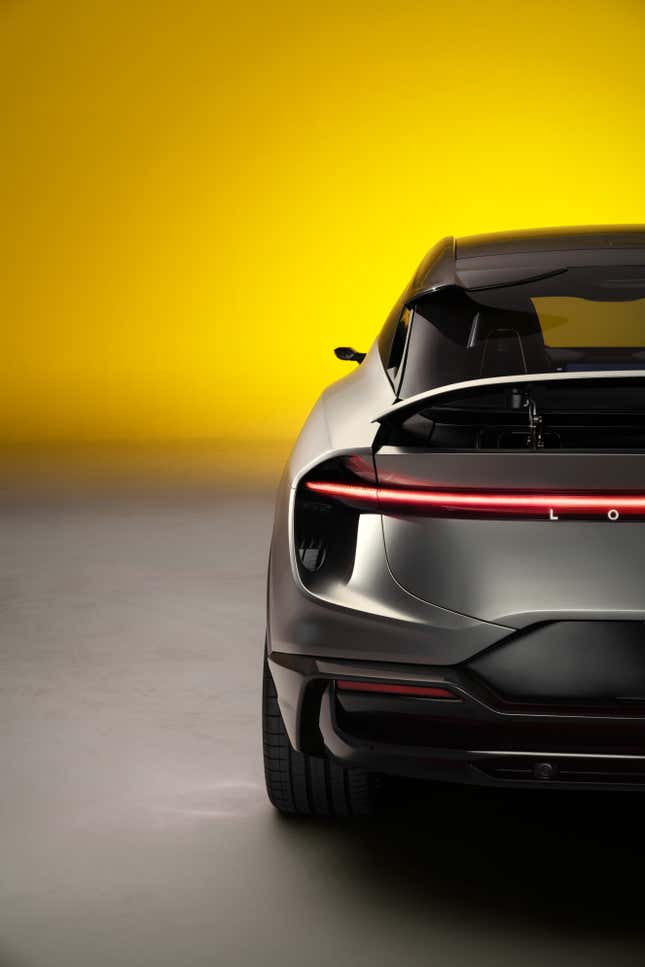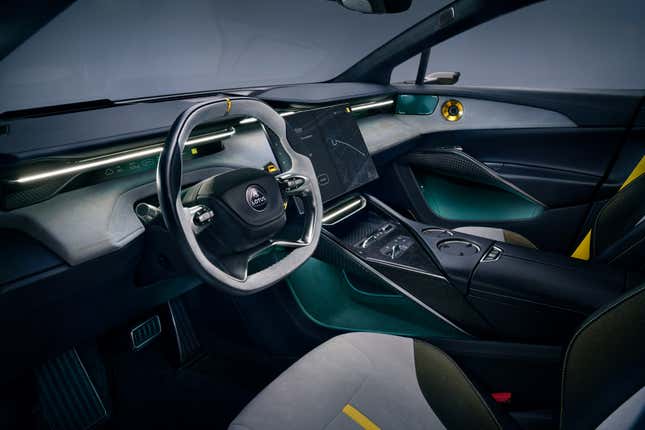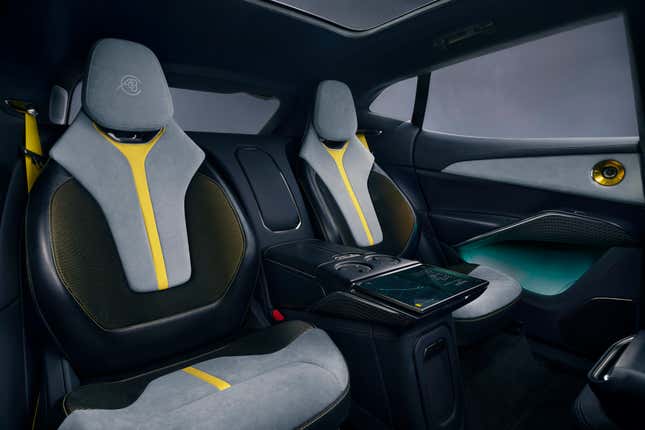Back when Geely bought Lotus, the company promised a new electric SUV to bring more cash to the small, niche brand. Then one SUV became two, but neither came with any real details. Now, however, we get the full view of the next era for Lotus: The Eletre crossover.
The Eletre debuted today in near-production trim, seemingly ready for the road save for a few nits to be picked. Those fancy side cameras will likely need to be replaced with boring old mirrors, but the rest of the crossover looks production-ready.

The Eletre’s front end has a certain Lamborghini Huracán Performante look to it, particularly in the body-colored sections that jut into the blacked-out grille, but the headlight arrangement seems to also take influences from Lotus’s new sibling Lynk & Co. It’s a clean design, that somehow manages to look more Lamborghini than the Urus.
Running down the sides of the car, there’s a character line that starts just behind the front fender — leaving a track-styled vent behind the front wheel. It’s unclear whether this vent actually lets air through, so place your bets now. Similar openings encase both sides of the heckblende at the rear, and these do show the tire through the opening.

Inside, the Eletre can be had in four- or five-seat versions, with a panoramic sunroof that’s standard in China and optional for the rest of us. The seats themselves look right at home under the Lotus brand — bolstered, supporting and thin.
The dash features a narrow, digital instrument cluster and an enormous center touch screen, and control is managed through a steering wheel that isn’t quite round. Lotus seems to be going for the mix of performance and opulence that so many brands try to achieve, but only time will tell if the company hits its mark.

As an EV in the year of our lord 2023, the Eletre promises “autonomous driving capability,” specifically “end-to-end autonomy.” What does that mean? Lotus helpfully explains:
End-to-end autonomy means a customer can use their smartphone app to request their Eletre to drive to them autonomously from a nearby parking space, and then autonomously repark once the journey is complete.
That sounds more like end-and-end autonomy, but sure, let’s go with it. The Eletra has a full suite of LIDAR sensors to help it self-park (and self-unpark), with the promise of new capability added via updates.

For those times between parking and unparking, though, the Eletra intends to live up to its badge’s performance heritage. Lotus claims “power outputs starting at 600 HP,” with no number given for a theoretical maximum output. The company also gives a zero-to-sixty time of “less than three seconds,” though doing so will likely impact the car’s claimed 373-mile range. Charging is said to take just 20 minutes for 248 miles of range, on a sufficiently fast charger.
Lotus hasn’t announced pricing for the Eletra, but “extensive use of carbon fiber and aluminum” doesn’t come cheap. All that tech and performance, however, may put the Eletra in a halo position — Lotus claims another two “lifestyle vehicles” are in the works over in Hethel.